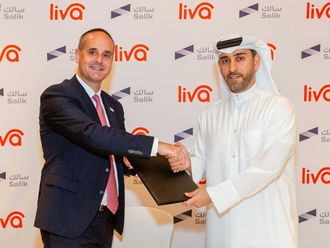Dubai: Qatar’s government budget leaped into a large surplus of 94.6 billion Qatari riyals (Dh95.4 billion, $26.0 billion) in the July-September period, the second quarter of its 2012/13 fiscal year, preliminary central bank data showed on Thursday.
The fiscal surplus of the world’s No 1 exporter of liquefied natural gas was equivalent to 53.9 per cent of gross domestic product in the period, according to the central bank.
It was more than double the 42.2 billion riyal surplus recorded in the same quarter of the previous year, and compared with an 18.5 billion riyal deficit in April-June. That put the cumulative surplus at 76.1 billion riyals in April-September.
Because of the timing of revenue flows, Qatar’s budget usually records deficits in the first quarter of its fiscal year, which begins in April, and then bounces back into surplus for the rest of the year.
The Opec member booked a robust 54.3 billion riyal surplus in the 2011/12 fiscal year, the biggest since at least 2005/06, despite a surge in spending on public sector wages.
Analysts polled by Reuters in January forecast Qatar’s budget surplus would be 9.1 per cent of GDP in the current fiscal year.
Revenue
Expenditure rose nearly 14 percent from a year earlier to 40.8 billion riyals in July-September. Revenue was 135.3 billion riyals, up 74 per cent. Oil- and gas-related revenue accounts for roughly 70 percent of Qatar’s budget income.
Under its budget plan the Gulf Arab state said it would boost spending to 178.6 billion riyals in the current fiscal year, including wages, services and projects, but expected a comfortable surplus of 27.8 billion riyals.
In September 2011 Qatar, which has avoided the social unrest that rocked much of the Arab world, raised basic salaries and social benefits for state civilian employees by 60 percent, while military staff received 50-120 percent increases.
It plans to spend an average of over 10 per cent of GDP annually on infrastructure in the run-up to hosting the soccer World Cup tournament in 2022.












